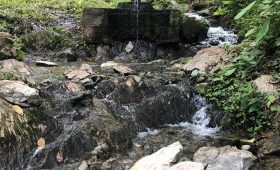Luxembourg City, a captivating blend of ancient and modern, is celebrated for its rich history and vibrant present. As the capital of the Grand Duchy of Luxembourg, it is both a UNESCO World Heritage site and a hub for major European institutions. Despite its compact size, the city offers a wealth of attractions that can be explored on foot, from the impressive Bock promontory to the underground passages of the Pétrusse Casemates, the Grand Ducal Palace, and the National Museum. The numerous banks along Boulevard Royal, once a fortress moat, are a testament to the duchy’s prosperity.
About Luxembourg City
Luxembourg City, known in Luxembourgish as Lëtzebuerg and in German as Luxemburg, is the largest city in the country, with a population of 135,441 as of September 2024, and over 200,000 in the metropolitan area. Covering an area of 51.73 km2, the city represents just under 2% of the national territory. It is located in the south of Luxembourg, at the confluence of the Alzette and Pétrusse rivers, 287 km northeast of Paris and 187 km southeast of Brussels.
Historical Overview
The origins of Luxembourg City date back to Roman times. Founded in 963 by Count Siegfried of the Ardennes, the city developed around a fortified castle on the Bock rock. Over centuries, Luxembourg became known as the “Gibraltar of the North” due to its formidable fortress, which was modified and strengthened under various foreign dominations. Today, it is often referred to as the “Green Heart of Europe,” not only for its lush landscapes but also as one of the three seats of the European Union, hosting its judicial and financial institutions.
Climate
Luxembourg City experiences an oceanic climate with continental influences. Winters are relatively cold, while summers are warm, with a refreshing coolness due to the city’s geographical position.
Transportation
The city is well-served by public transportation. The Luxembourg tramway, with its single line (T1), has been operational since December 2017, connecting Luxexpo to the Pont Grande-Duchesse Charlotte. The line was extended in September 2022 to reach the Lycée Bonnevoie, covering 8.9 kilometers. As of early 2025, the tramway stretches from Luxembourg-Findel Airport to the Luxembourg Stadium, spanning 16.4 kilometers.
Additionally, the city operates 32 bus lines, including the “City Night Bus” for nocturnal travelers. The bus network is complemented by the RGTR lines, providing local service.
Luxembourg: A Cosmopolitan City with a Rich History
Visiting Luxembourg City is akin to a journey through time. Despite its small size, the Grand Duchy boasts a particularly rich history, with the capital serving as a microcosm of European history. Luxembourg was a founding member of the European Union, becoming the provisional seat of the European Coal and Steel Community in 1952 and the first European capital. Today, alongside Brussels and Strasbourg, Luxembourg City is one of the three European capitals, hosting numerous EU institutions.
With 169 nationalities residing within its borders, Luxembourg City is a cosmopolitan and multilingual metropolis, making it easy for visitors to feel at home even during a brief stay.
Exploring Luxembourg City
Discovering Heritage on Foot or by Bike
Since 1994, the city’s fortifications and old quarters have been listed as UNESCO World Heritage sites. Several routes allow visitors to explore this heritage:
- Wenzel Walk: Named after Wenceslas II, Duke of Luxembourg, this 2.5 km route offers a journey through 1,000 years of history in the city’s oldest districts, taking approximately 3 hours.
- Vauban Circuit: Following the footsteps of military engineer Vauban, this 5.16 km trail highlights strategic points of the former fortress, with exceptional panoramic views, also taking about 3 hours.
- UNESCO Bike Tour: This 9.5 km cycling route traverses the Pétrusse Valley and the lower towns of Clausen and Pfaffenthal, showcasing around 80 sites and attractions. Consider downloading the Izi-Travel app and renting electric bikes from Véloh for an enhanced experience.
For those interested in the city’s subterranean history, the Bock Casemates and Pétrusse Casemates offer a fascinating underground exploration.
The Godchaux Circuit, a 3 km trail in the Alzette Valley, highlights the early industrialization of Luxembourg, focusing on the textile industry.
Architecture enthusiasts can explore the Kirchberg plateau, home to contemporary architecture and public art, with up to 60 points of interest to discover in 2 to 3 hours.
Getting to Luxembourg City
Luxembourg City is accessible by air, train, and road. The primary international gateway is Findel Airport, located in Sandweiler, northeast of the city. Despite its small size, the airport is well-connected to European capitals and major transport hubs. Regular buses (lines 16 and 29) provide efficient service to the city center, train station, and Kirchberg district.
For train travelers, Luxembourg’s main railway station, Gare Lëtzebuerg, is a hub for connections from neighboring countries like France, Germany, and Belgium. The station, with its neobaroque architecture, is just a short walk from the city center.
If you prefer driving, Luxembourg City is reachable via a network of highways, making it a convenient stop for road trips from cities such as Brussels, Paris, and Frankfurt.
Best Time to Visit
The ideal time to visit Luxembourg City is from April to September when the weather is mild and conducive to outdoor activities. During these months, the city hosts numerous festivals and events, enhancing its lively ambiance. Winter, with its festive Christmas markets, offers a different charm. The city is beautifully decorated, and visitors can enjoy traditional treats and shop for unique gifts.
Notable Attractions
1. Luxembourg Old Town
Begin your journey in the Old Town, a UNESCO World Heritage site. This area is a maze of narrow streets, historic buildings, and charming squares. Key landmarks include the Notre-Dame Cathedral, the Grand Ducal Palace, and the Corniche, which offers stunning views of the Alzette River.
2. Bock Casemates
Explore the Bock Casemates, a network of underground tunnels and fortifications carved into the city’s cliffs. These ancient defenses played a significant role in Luxembourg’s military history. The site also provides panoramic views of the city.
3. Grund
Visit the Grund, a picturesque neighborhood located in the city’s gorge. Known for its quaint houses and cafés, it offers a peaceful retreat. The Neumünster Abbey, a cultural center hosting exhibitions and events, is also located here.
4. Kirchberg
Discover Kirchberg, the city’s modern district, home to European Union institutions and striking architecture. Notable sites include the European Court of Justice, the Philharmonie Luxembourg, and the MUDAM, a contemporary art museum.
Summary
- Luxembourg City is a destination rich in history and modern attractions.
- Accessible by air, train, and road, it offers convenient travel options.
- Public transportation and pedestrian-friendly streets make exploring easy.
- Visit in spring or summer for pleasant weather and vibrant events.
- Key attractions include the Old Town, Bock Casemates, Grund, and Kirchberg.




